Introduction: Why a Pet Bed Matters
A cozy pet bed is more than a luxury—it’s essential for your dog or cat’s health and happiness. The right bed supports joints, promotes restful sleep, and gives your pet a safe space to call their own. At Cute Pets Lovers, we know pet owners want the best for their furry friends. This guide explores how to choose the perfect pet bed, covering size, materials, types, and more. With tips backed by experts like those at PetMD, you’ll find the ideal bed for your dog or cat. Let’s dive into creating a comfy retreat for your pet!

A dog enjoying a cozy pet bed. Image source: Pexels (Free to use).
Why Pet Beds Are Essential
Pets spend a significant amount of time sleeping—dogs up to 12–14 hours daily, and cats up to 16 hours, according to the ASPCA. A good bed supports their physical health by:
- Relieving pressure on joints, especially for senior pets.
- Providing warmth and comfort in colder climates.
- Reducing anxiety with a dedicated safe space.
A well-chosen bed also protects your furniture from pet hair and scratches. Let’s explore the key factors in selecting the perfect pet bed.
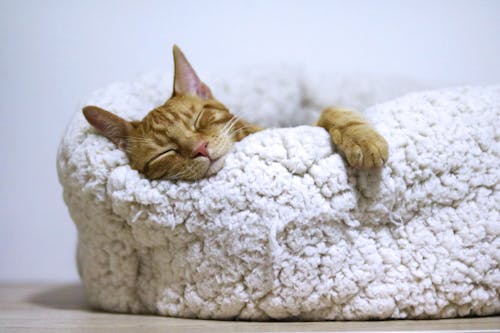
A cat curled up on a comfy bed. Image source: Pexels (Free to use).
Factors to Consider When Choosing a Pet Bed
1. Size and Fit
The bed should match your pet’s size and sleeping style. Measure your pet from nose to tail, adding a few inches for comfort. Dogs that sprawl need larger beds, while cats who curl up may prefer smaller, enclosed options.
- Dogs: Large breeds like Labradors need beds at least 40–50 inches long.
- Cats: Most prefer beds 15–20 inches in diameter.
2. Material and Durability
Choose durable, pet-safe materials. Memory foam is ideal for joint support, while cotton or polyester covers are easy to clean. Avoid beds with small parts that could be chewed off.
3. Sleeping Style
Observe how your pet sleeps:
- Sprawlers: Flat, rectangular beds work best.
- Curlers: Round or bolster beds provide coziness.
- Diggers: Beds with raised edges or blankets suit burrowers.
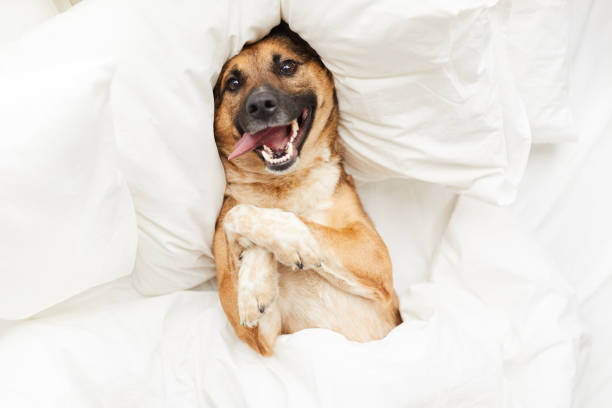
A dog sprawling on a spacious bed. Image source: Pexels (Free to use).
Types of Pet Beds
Orthopedic Beds
Ideal for senior pets or those with arthritis, orthopedic beds use memory foam to cushion joints. Brands like PetFusion offer durable options, as noted by AKC.
Bolster Beds
These have raised edges, perfect for pets who love to lean or snuggle. Great for anxious dogs or cats seeking security.
Donut Beds
Round and plush, donut beds suit cats and small dogs who curl up. They’re cozy and often machine-washable.
Heated Beds
For colder climates, heated beds keep pets warm. Ensure they have safety features like low-voltage settings.
Cave Beds
Cats love cave beds for their enclosed, cozy design. They’re also great for small dogs who burrow.
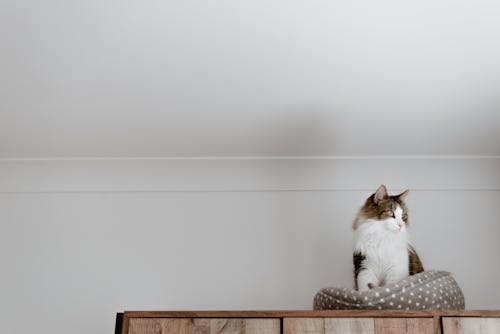
A cat snug in a cave-style bed. Image source: Pexels (Free to use).
Choosing Beds for Specific Needs
Senior Pets
Older pets need extra support. Look for low-entry beds to ease access and memory foam for joint relief.
Puppies and Kittens
Young pets chew, so choose durable, chew-resistant beds. Washable covers are a must for accidents.
Anxious Pets
Bolster or cave beds provide a sense of security. Calming beds with anti-anxiety features are also available.
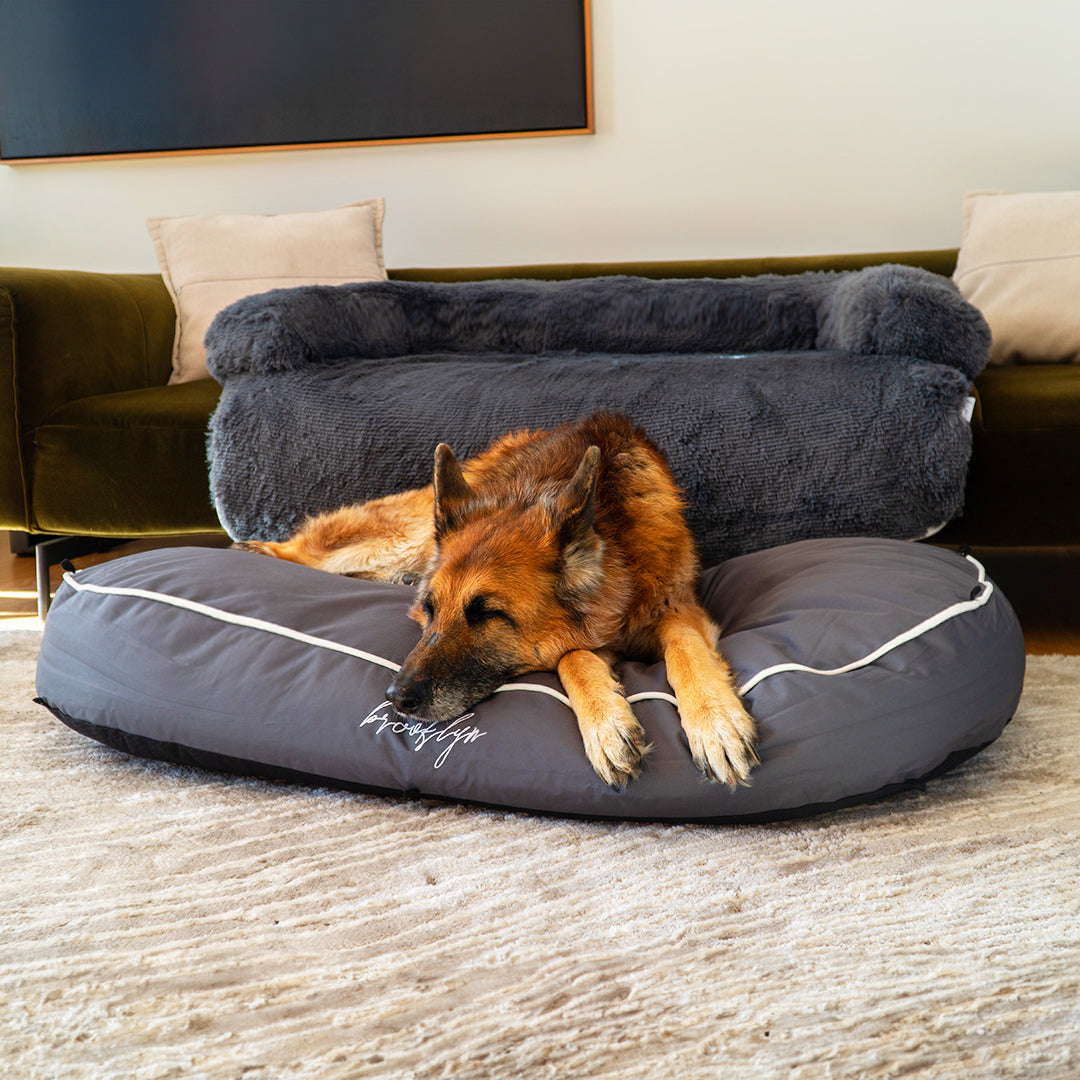
A puppy on a chew-resistant bed. Image source: Pexels (Free to use).
Maintaining and Cleaning Pet Beds
Regular cleaning keeps beds hygienic. Choose beds with removable, machine-washable covers. Vacuum weekly to remove hair and debris. For tough stains, use pet-safe cleaners. The Humane Society recommends washing beds every 1–2 weeks.
Pro Tip: Sprinkle baking soda on the bed before vacuuming to neutralize odors.
Where to Place Your Pet’s Bed
Place the bed in a quiet, low-traffic area where your pet feels safe. Avoid drafty spots or areas near loud appliances. For cats, consider elevated beds on shelves for a high perch. Dogs may prefer a corner of the living room for social proximity.
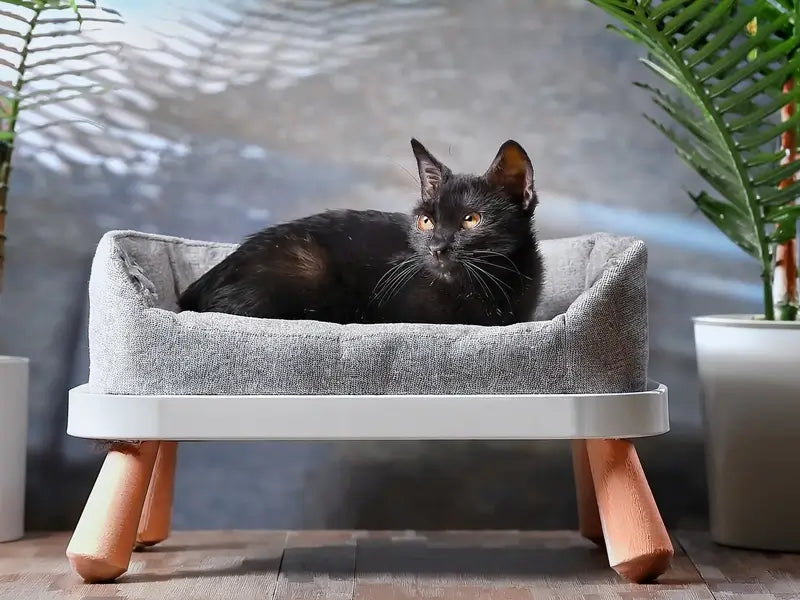
A cat relaxing on an elevated bed. Image source: Pexels (Free to use).
Budget-Friendly Pet Bed Options
Pet beds range from $20 to $200. Affordable options from brands like Frisco are durable and comfy. DIY beds using old blankets or foam can also work—check out tutorials on PetMD for ideas.
Tips for Introducing a New Bed
- Place familiar items like a toy or blanket on the bed.
- Use treats to encourage your pet to explore it.
- Be patient—some pets take time to adjust.
Have you tried a new bed with your pet? Share your experience in the comments!
Conclusion: A Cozy Bed for a Happy Pet
Choosing the perfect pet bed is a simple way to boost your dog or cat’s comfort and health. From orthopedic beds for seniors to cozy cave beds for cats, there’s a perfect option for every pet. At Cute Pets Lovers, we’re here to help you make informed choices. Try these tips, and let us know how your pet loves their new bed in the comments! Your furry friend deserves the best—start shopping for their dream bed today!
Want more pet care tips? Visit Cute Pets Lovers to join our community of pet lovers!
